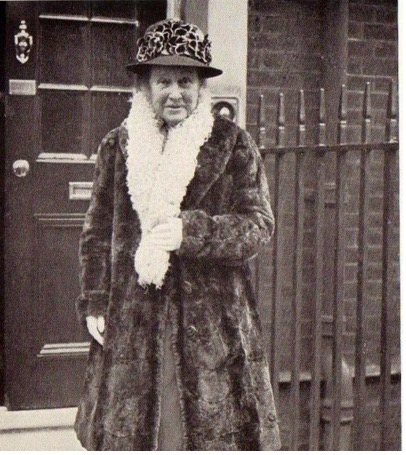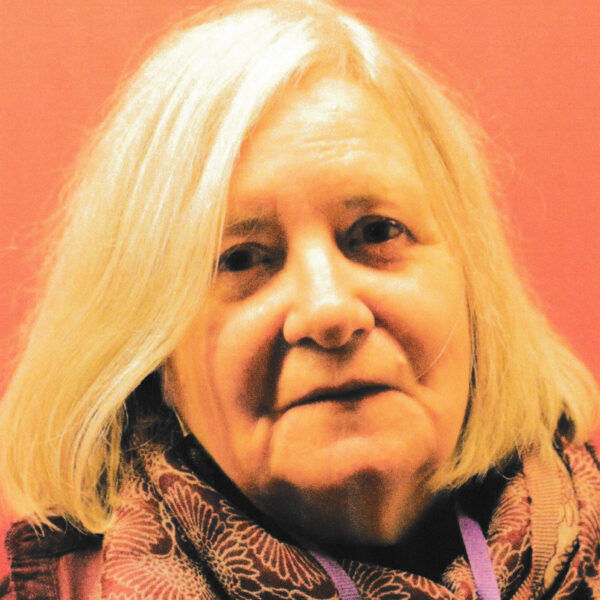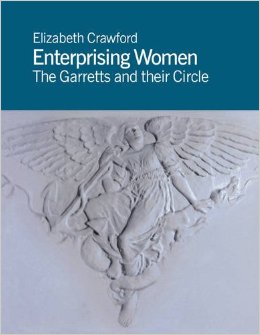Posts Tagged Agnes Garrett
Elizabeth Garrett Anderson Gallery At The UNISON Centre
Posted by womanandhersphere in The Garretts and their Circle on March 28, 2013
ALAS, IT WOULD APPEAR THAT THE GALLERY HAS FAILED TO REOPEN AFTER COVID CLOSURE. PLEASE PHONE UNISON TO ENQUIRE.
The Elizabeth Garrett Anderson Gallery at the UNISON Centre tells the story of Elizabeth Garrett Anderson, of the hospital she built, and of women’s struggle to achieve equality in the field of medicine.
Elizabeth Garrett Anderson (1836-1917) was determined to do something worthwhile with her life. In 1865 she qualified as a doctor. This was a landmark achievement. She was the first woman to overcome the obstacles created by the medical establishment to ensure it remained the preserve of men.
Elizabeth Garrett Anderson then helped other women into the medical profession, founding the New Hospital for Women where women patients were treated only by women doctors.
Elizabeth Garrett Anderson, by her example, demonstrated that a woman could be a wife and mother as well as having a professional career.
Elizabeth Garrett Anderson worked to achieve equality for women, being especially active in the campaigns for higher education and ‘votes for women’.
In the early 1890s the New Hospital for Women (later renamed the Elizabeth Garrett Anderson Hospital) was built on the Euston Road and continued to treat women until 2000. For some years this building then lay derelict until a campaign by ‘EGA for Women’ won it listed status. UNISON has now carefully restored the building, bringing it back to life as part of the UNISON Centre.
Two important rooms in the original 1890 hospital building have been dedicated to the Elizabeth Garrett Anderson Gallery. One is the
ORIGINAL ENTRANCE HALL
of the hospital which has been carefully restored to its original form. Here you can study an album, compiled specially for the Gallery, telling the history of the Elizabeth Garrett Anderson Hospital in words and pictures, while, in the background you can listen to a soundscape evocative of hospital life. This is interwoven with the reminiscences of hospital patients, snippets from the letters of Elizabeth Garrett Anderson and sundry other sounds to stimulate your imagination.
The other Gallery room is what was known when the hospital opened as
THE MEDICAL INSTITUTE
This was a room, running along the front of the hospital, parallel to Euston Road, set aside for all women doctors, from all over the country, at a time when they were still barred from the British Medical Association. It was intended as a space in which they could meet, talk and keep up with the medical journals.
Here you can use a variety of media to follow the story of women, work and co-operation in the 19th and 20th centuries.
A BACK-LIT GRAPHIC LECTERN RUNS AROUND THE MAIN GALLERY:
allowing you to see in words and pictures a quick overview of the life of Elizabeth Garrett Anderson and of her hospital.
AT INTERVALS ARE SET SIX INTERACTIVE TOUCH-SCREEN MONITORS
-named – Ambition, Perseverance, Leadership, Equality, Power in Numbers and Making Our Voices Heard – allowing you to access more information about Elizabeth Garrett Anderson, about the social and political conditions that have shaped her world and ours, and about the building’s new occupant – UNISON..
Each monitor contains:
TWO SHORT VIDEO SEGMENTS.
‘Elizabeth’s Story’. Follow the video from screen to screen. Often speaking her own words, the video uses images and voices to tell the story of Elizabeth Garrett Anderson’s life.
‘UNISON Now’ UNISON members tell you what the union means to them.
and four
INTERACTIVES
‘Campaigns for Justice’ and ‘Changing Lives’.
Touch the screen icons to discover how life in Britain has changed since the birth of Elizabeth Garrett Anderson.
AMBITION
Campaigns for justice
Victorian Britain: a society in flux
Victorian democracy: who could vote, and who couldn’t
Did a woman have rights?
Workers organised
Changing lives
The people’s lives in Victorian Britain
The medical profession before Elizabeth Garrett
Restricted lives, big ambitions: middle-class women in the Victorian era
Women workers in the first half of the 19th century
PERSEVERANCE
Campaigns for justice
The changing political landscape
Widening the franchise: can we trust the workers?
Women want to vote: the beginnings of a movement
Trade unions become trade unions
Changing lives
A new concept of active government: Victorian social reform
Women as nurses and carers
Living a life that’s never been lived before: women attempt to enter medicine
International pioneers: women study medicine abroad
LEADERSHIP
Campaigns for justice
Contagious Diseases Acts
Trade unions broaden their vision
Women and education
Women trade unionists
Changing lives
The middle-class century
Working women in the second half of the 19th century
Social reform, philanthropy and paternalism
Women doctors for India
EQUALITY
Campaigns for justice
The women’s suffrage movement
The Taff Vale decision hampers the unions
The founding of the Labour party
The People’s Budget
Changing lives
Work and play
Marylebone and Somers Town
Did the working classes want a welfare state?
1901 – Who were the workers in the NewHospital for Women?
POWER IN NUMBERS
Campaigns for justice
The General Strike – 1926
The first Labour governments
Feminist campaigns between the wars
1901: The lives of working women in London
Changing lives
Work of women doctors in the First World War
Can we afford the doctor? Health services before the NHS
Wartime demand for social justice
The creation of the National Health Service 1945-1948
MAKING OUR VOICES HEARD
Campaigns for justice
Equality campaigns
Public sector unions before UNISON
UNISON brings public service workers together
Are trade unions still relevant?
Changing lives
The National Health Service becomes sacrosanct
Did the welfare state change the family?
Women’s equality today
Women in medicine now
IN THE CENTRE OF THE GALLERY YOU WILL FIND:
ENTERPRISING WOMEN
an interactive table containing short biographies of over 100 women renowned for their achievements in Britain in the 19th-21st centuries. Up to four visitors can use the table at any one time. Drag a photograph towards the edge of the table to discover details of that individual’s life. Or search by name or vocation, using the alphabetical or subject lists.
ON THE WALLS OF THE GALLERY
PROJECTIONS
show a changing display of pictures of the hospital as it was and of Elizabeth Garrett Anderson and some of the other women whose stories the Gallery tells.
is designed in the style associated with the work of Elizabeth Garrett Anderson’s sister, the architectural decorator Agnes Garrett, who was in charge of the original interior decoration of the hospital in 1890. The Gallery’s fireplace is the only surviving example of Agnes Garrett’s work. Next to this hangs a length of wallpaper, ‘Garrett Laburnum’, re-created from one of her designs.
In the Garrett Corner a display case and a low table contain a small collection of objects relevant to Elizabeth Garrett Anderson, the hospital and early women doctors.
While here do sit down and browse the library of books. These relate to the history of women – in society, in medicine, in the workplace, and in trade unions – and to the Somers Town area.

Plaque commemorating a substantial donation to the hospital by Henry Tate, industrialist and philanthropist
ACROSS FROM THE GARRETT CORNER IS A DISPLAY OF CERAMIC PLAQUES
Decorative plaques that used to hang beside patients’ beds, each commemorating a donor’s generosity.
You can read in detail about the work of the Garrett family in the fields of medicine, education, interior design, landscape design, citizenship and material culture in Elizabeth Crawford, Enterprising Women: the Garretts and their circle, published by Francis Boutle Publishers, £25. The book can be bought direct from womanandhersphere.com or click here to buy from the publisher
DO VISIT:
Elizabeth Garrett Anderson Gallery at the UNISON Centre
130 Euston Road
London NW1 2AY
Telephone: 0800 0 857 857
Open Wednesday to Friday 9.00am to 6.00pm
and the third Saturday of every month 9.00am to 4.00pm
Admission Free
The Garretts And Their Circle: Ladies’ Residential Chambers And The Importance of Tiles
Posted by womanandhersphere in The Garretts and their Circle on January 15, 2013
York Street Chambers – in York Street, Marylebone – was the second venture undertaken by the Ladies’ Residential Chambers Company, of which Agnes Garrett was a driving force. Its purpose was to provide purpose-built accommodation for ‘educated working women’.
The company had successfully launched the Ladies’ Residential Chambers in Chenies Street in 1889 – to a design by J.M. Brydon – and lost no time in commissioning Thackeray Turner, brother-in-law of Christiana Herringham, one of the company’s directors, to plan for another set of chambers, to be erected in York Street, just south of the Marylebone Road. Turner worked in partnership with Eustace Balfour, whose sister, Eleanor Sidgwick, was involved with Millicent Fawcett (Agnes Garrett’s sister) in the founding of Newnham College, Cambridge.
The York Street Chambers were twice as expensive to build as those in Chenies Street – and have not suffered the indignity of the Second World War bombing that destroyed much of the latter’s original detail. Today York Street Chambers still looks handsome – both outside and inside.
Although it is unlikely that Agnes Garrett was responsible for the internal decoration (while, of course, assiduously attending committee meetings and doubtless supervising such matters) the green tiles that still line the corridors of York Street Chambers appear identical to the blue tiles commissioned from Powells of Whitefriars by Agnes for the corridors of the New Hospital for Women, her sister Elizabeth’s contemporary venture. Alas, we cannot compare them with those selected for Chenies St for it appears that, c 1990, Camden Council removed the corridor tiles before spraying the walls with a purple-fleck paint (they have since been given a rather less aggressive treatment).
As in Chenies Street, so in York Street, the basement of the chambers housed a communal dining room. While this was supposed to make life easier for the residents by relieving them of the burden of cooking, committee minutes show that in both sets of chambers the dining room was the focus of a variety of bitter resentments. It makes quite entertaining reading when minuted (if you are that way inclined), but must have been very wearing on the patience of the Company’s directors. When I visited York Street Chambers – probably c 2000 – the basement was in the process of being renovated in order to house a School of Massage and I do not know whether the tiles with which the room was lined were retained. I was, however, very taken by the vigour and panache of the decoration and cannot believe that they would have been ripped out.
When, in Enterprising Women, I described the similar space – by then divided into two flats – that had originally constituted the Chenies Street communal dining room I had no idea that underneath the bland decoration lay a similar riot of ‘Persian’ tiles. It was only a year or so after the book was published that the elderly owner (who had been so helpful in giving me access – and allowing me to photograph Ellen Rope’s ‘Hope’ hovering over his mantle piece) sold the flat to a young couple who undertook a full-scale renovation. Knowing that I had written about the Chambers – indeed ‘Hope’ was on its cover (see pic below) -they were kind enough to invite me round to see what they had uncovered. And, behold, the room was transformed – the light reflecting off the colourful tiles with which the original dining room had been lined. This was closer to the effect experienced by the chambers’ earlier tenants as they dined – with Ellen Rope’s ‘Hope, Faith, Charity and Heavenly Wisdom’ for inspiration along the wall above them – than the rather claustrophobic gloom of the room as I had first encountered it.

A section of the (former) Chenies Street communal dining room. ‘Hope’ remains on the wall over the mantle piece (though not clear in this pic), while part of ‘Charity’ has survived in the alcove to the left of the fireplace. ‘Faith’ and ‘Heavenly Wisdom’ have disappeared, absorbed into a corridor and another flat. The four spandrels had originally been created to decorate the vestibule of the Woman’s Building at the 1893 World’s Columbian Exposition and afterwards travelled back across the Atlantic to be incorporated in 1897 into the extended dining room of the Chenies Street Chambers. What an adventure.
Copyright














